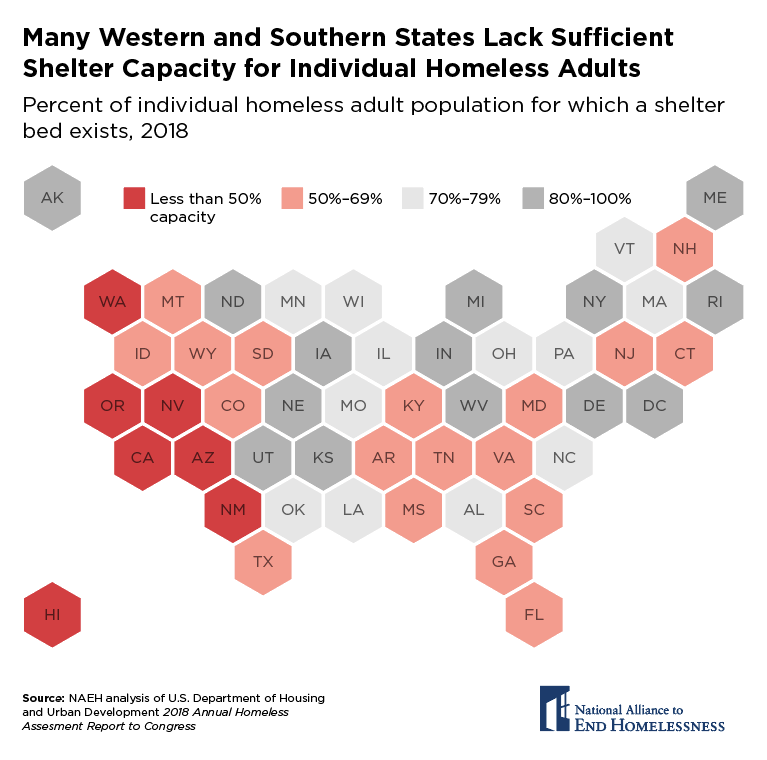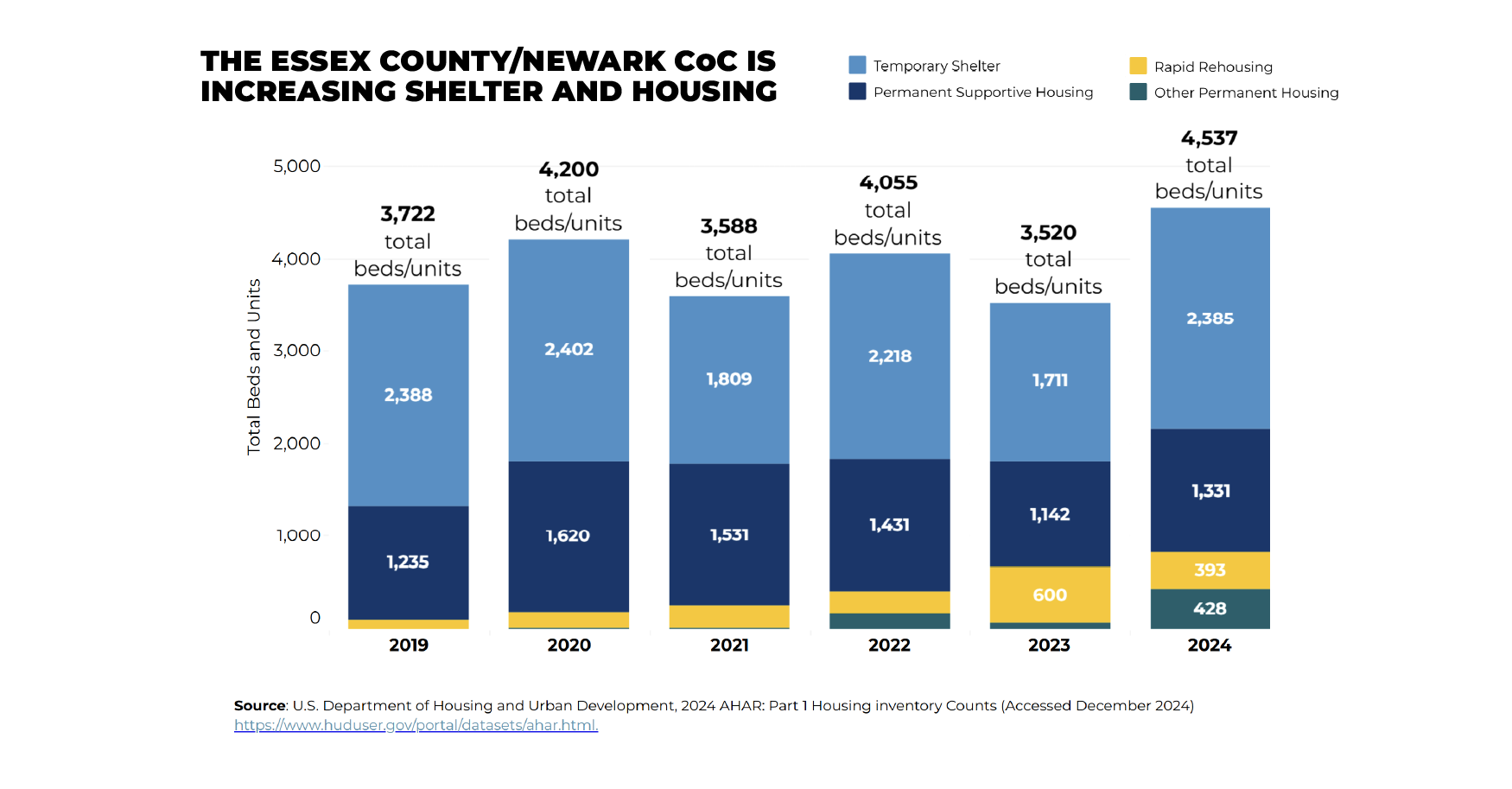The most recent Annual Homeless Assessment Report to Congress reveals that nearly half (48%) of all homeless individuals are unsheltered—living in their cars, on the streets, or in some other place not meant for human habitation.
Unsheltered homelessness is driven by many factors, but can be exacerbated by a lack of accessible, low-barrier shelter. Shelter bed availability varies greatly by state. Some states (Maine, West Virginia, Kansas, and Delaware) have enough beds to shelter 90+ percent of their individual homeless population, while others, particularly on the West Coast, have capacity for less than half of their individual homeless population.

Ending unsheltered homelessness is not necessarily about building more shelter. Communities can maximize their current shelter capacity by:
- investing in prevention and diversion strategies to reduce the number of people entering shelter;
- lowering shelter barriers to increase access for people with higher needs; and
- focusing on exits into permanent housing.
Stay Updated: Solutions, Stories, and Ways to Make an Impact
Sign up to receive updates on the Alliance’s work, including the latest research, advocacy efforts, and real stories of progress — plus ways you can help drive lasting change.












